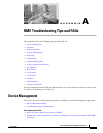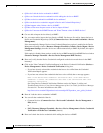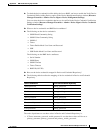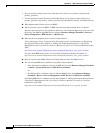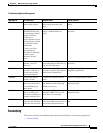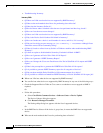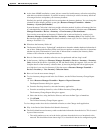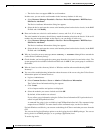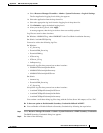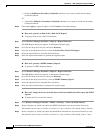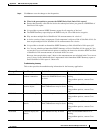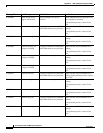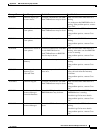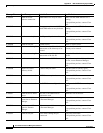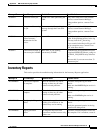
A-8
User Guide for Resource Manager Essentials 4.1
OL-11714-01
Appendix A RME Troubleshooting Tips and FAQs
Inventory
–
The device does not support MIBs for serial numbers.
In either case, you can set the serial number in the inventory database in this way:
a. Select Resource Manager Essentials > Devices > Device Management > RME Devices >
Edit Device Attributes.
The Device Attributes Information dialog box appears.
b. Select the device and enter the correct serial number printed on the device chassis, in the RME
ID field and click Modify.
Q.
How can I make sure a device's serial number is correct, and fix it, if it is wrong?
The serial number in inventory should always match the number printed on the chassis. If the serial
number does not match the number on the chassis, you can change it in this way:
a. Select Resource Manager Essentials > Devices > Device Management > RME Devices >
Edit Device Attributes.
The Device Attributes Information dialog box appears.
b. Select the device and enter the correct serial number printed on the device chassis, in the RME
ID field and click Modify.
Q.
Why am I receiving an error message, Write Community = INCORRECT although I have entered the
correct Write Community String?
A.
Check whether you have dropped the system group from the view (read-view and write-view). The
system group must be available for Read and Write task. In MIB-II, the system group is available as
the default.
Q.
What do I need to collect from my Solaris or Windows machine when troubleshooting RME
Inventory?
A.
You can collect troubleshooting information about the status of the server using the Collect Server
Information
option in Common Services:
a. Login as Administrator.
b. Select Common Services > Server > Admin > Collect Server Information.
The Collect Server Information dialog box appears.
c. Click Create.
A list of report modules and options are displayed.
d. Select the modules you want to include and click OK.
By default, all the modules are selected.
If you collect server information using the Collect Server Information GUI option the data is
stored in /opt/CSCOpx/htdocs/collect.
A command line script is also available at /opt/CSCOpx/bin/collect.info. The command script
outputs data to STDOUT. For more details on the command script, see the User Guide.
For both Windows and Solaris, you can turn on the debug for ICServer and other processes from the
GUI.
You can use the LogLevel Settings option to set the logging levels for RME packages. You can set
the log levels for all RME packages, or at a package (application) level.
To set the log levels:




